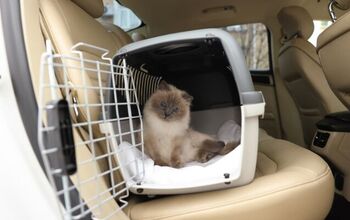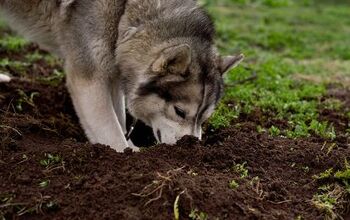GI Stasis In Rabbits: Symptoms, Causes, and How To Prevent It

Even though they are beloved as family pets all across the world, rabbits will undoubtedly present a few challenges for all owners – just like all pets do. And when these challenges present themselves, you need to be ready and well-informed, in order to tackle them quickly and efficiently. One of these challenges that your rabbit can potentially come across in their life is GI stasis, better known as gastrointestinal stasis.
Somewhat common in rabbits, and potentially quite dangerous, GI stasis occurs when the digestive system slows down or stops completely. When this happens, bacteria and gasses are released and cause bloating. If left untreated, this condition can quickly deteriorate your rabbit’s health, causing them to starve and dehydrate, and potentially lead to their death. Needless to say, it’s a condition that should be taken seriously – from keeping an eye out for symptoms to taking all necessary steps to prevent it.
Symptoms of GI Stasis in Rabbits
As a bunny owner, you will have to know exactly what to look for as clear indications of GI stasis. One of the common indicators is the loss of appetite. This can appear all of a sudden, or gradually over a period of time. Eventually, you might even notice the complete lack of poop or some sort of abnormality of the same – such as soft stool or diarrhea instead of round pellets.
Still, the most obvious symptom is the complete lack of movements from your bunny: this is the lethargy that occurs because of starvation and dehydration which are a direct result of gastrointestinal stasis. It can also instigate teeth grinding, a sign that your rabbit is in pain and discomfort.
What Causes GI Stasis?
Rabbits are gentle beings, and their delicate nature might require some special care on a day-to-day basis. Neglect some of the crucial parts, and your bunny might become ill. A common cause of GI Stasis is a bad diet. If it contains too many carbohydrates (carbs for short), or too few digestible fibers, the condition can begin to form. This diet is formed when a bunny eats way too many commercial pellets – which are full of carbs – and too little hay, which is the main source of fiber for rabbits. A diet optimally rich in fiber should mean that at least 70% of what your bunny consumes in a day is hay.
Other causes of GI stasis are painful conditions that affect the teeth, such as malocclusion, and in turn, prevent the rabbit from eating properly. With the loss of appetite, the digestive system slows down. General loss of appetite is another cause, and it can occur when the rabbit is too stressed, scared, overheated, in pain, dehydrated, and so on.
How You Can Prevent GI Stasis in Rabbits
In order to prevent GI stasis in your pet rabbit, the foremost thing to do is balance their diet. It should contain plenty of high-fiber grass hay and some moisture-rich leafy greens. Supplement this with carbs-rich pellets, but only in small amounts. This will keep their gut flora in check and keep their digestive system in top form.
Furthermore, make sure that your rabbit is not stressed in any way, whether it’s due to environmental or social and emotional causes. Keep your bunny healthy and happy by catering to their needs to avoid lethargy and loss of appetite, and you can be sure that gastrointestinal stasis won’t affect them.

A proud mama to seven dogs and ten cats, Angela spends her days writing for her fellow pet parents and pampering her furballs, all of whom are rescues. When she's not gushing over her adorable cats or playing with her dogs, she can be found curled up with a good fantasy book.
More by Angela Vuckovic























